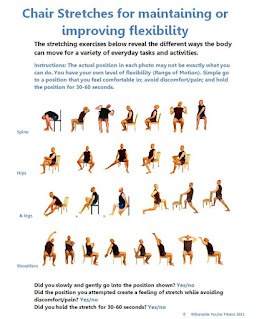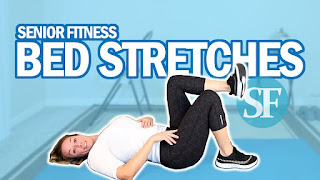Ways for Adding Exercise to Daily Life:
Exercise is not just for the young; it is a key component of a healthy lifestyle at any age. For seniors, integrating simple and enjoyable physical activities into daily routines can have profound effects on overall health and well-being. This guide aims to shed light on how seniors can effortlessly incorporate exercise into their daily lives, almost without realizing they are doing it.
This is a topic we have covered before but it bears repeating. You can read those posts here, Exercise and the Ageing Body. Exercise and good nutrition are the two most important factors to maintaining good health and mobility as we age.
Sneaky Ways to Boost Physical Activity
For seniors, exercise doesn't have to mean hitting the gym or running a marathon. Simple activities like gardening, walking while talking on the phone, or dancing while cooking can add meaningful movement to your day. Consider parking further away from the store entrance to add a few extra steps, or take a leisurely stroll after dinner instead of watching TV. These small actions, when accumulated, can have significant health benefits.
Overcoming Obstacles to Exercise
Physical limitations or chronic conditions can make exercise seem daunting for seniors. However, many low-impact and simple activities can be seamlessly integrated into daily life. For example, performing seated leg lifts while watching TV or doing chair yoga can improve strength and flexibility without requiring a trip to the gym.
Building Exercise into Daily Routines
Making exercise a natural part of your day is easier than you might think. Turn household chores into a workout by adding some squats when you pick things up or stretching high when you dust. Take the stairs instead of the elevator, or do calf raises while brushing your teeth. These small changes can build up over time, leading to improved health without a structured exercise plan.
Recommended Daily Activities for Seniors
From tai chi in the living room to walking the dog, numerous everyday activities can serve as effective exercise for seniors. This section will provide a detailed list of recommended daily activities that are both safe and beneficial for seniors, complete with specific instructions and modifications where necessary.
Starting Slow and Safe
Safety is paramount, especially for seniors. Here are practical tips for integrating exercise safely into daily life for seniors, with an emphasis on starting slowly, paying attention to body signals, and choosing low-risk activities:
- - Begin with low-intensity activities such as walking or gentle stretching, and gradually increase the duration and intensity as your body adapts.
- - Pay attention to how your body feels during and after activity. If you feel pain (other than typical workout discomfort), dizziness, or shortness of breath, stop the activity and consult a healthcare professional.
- - Opt for exercises that are low-impact and easy on the joints, such as swimming, walking, or chair yoga.
- - Start each session with a warm-up, like light stretching or walking, and end with a cool-down period to gradually bring your heart rate back to normal.
- - Drink water before, during, and after exercise to prevent dehydration, especially in hot weather.
- - Choose comfortable, supportive shoes that are appropriate for the activity to reduce the risk of falls and injuries.
- - Learn the correct form for each exercise to avoid strain or injury. Consider consulting with a fitness professional or physical therapist.
- - Establish achievable and incremental goals that set you up for success rather than frustration.
- - Mix different types of activities to keep exercise interesting and to work different muscle groups.
- - Before starting a new exercise routine, especially if you have chronic health conditions, consult with a doctor or physical therapist who can provide personalized advice.
- - Try to exercise at the same time each day to establish a habit, making it a natural part of your daily routine.
- - Choose exercises that you enjoy, which will make you more likely to stick with them in the long run.
- - Having a friend or family member to exercise with can provide motivation, support, and additional safety.
- - If needed, use aids such as handrails, resistance bands, or chair supports to ensure exercises are performed safely.
- - Allow your body time to recover between exercise sessions, and make sure you are getting adequate sleep.
These tips emphasize the importance of starting slowly, listening to your body, and choosing safe, low-risk activities that can be easily and sustainably integrated into a senior’s daily life.
Nutrition to Support Your Active Lifestyle
Proper nutrition and hydration are essential for seniors, especially those integrating more physical activity into their daily lives. Eating a balanced diet that supports an active lifestyle provides the energy and nutrients needed for optimal health without requiring a significant change in eating habits.
Here are some key nutritional considerations for seniors who are regularly active:
Protein:
- -Protein is crucial for maintaining and building muscle mass, which tends to decrease with age. It also aids in recovery after exercise.
- - Lean meats (chicken, turkey, fish), eggs, dairy products (Greek yogurt, cottage cheese), legumes (beans, lentils), nuts, and seeds.
- - Aim for a source of protein at each meal.
Carbohydrates:
- - Carbohydrates are the body’s primary energy source during exercise, making them essential for seniors who are physically active.
- -Whole grains (oats, quinoa, barley, whole wheat), fruits, and vegetables.
- - Choose complex carbohydrates over simple sugars for sustained energy.
Healthy Fats:
- -Fats are essential for hormone production and absorption of fat-soluble vitamins. They also provide a concentrated source of energy.
- -Avocado, nuts and seeds, olives, fatty fish (salmon, mackerel), and oils (olive oil, flaxseed oil).
- - Opt for unsaturated fats and try to limit saturated and trans fats.
Hydration:
- - Staying hydrated is essential, especially when exercising, as dehydration can lead to fatigue and decreased performance.
- - Drink water throughout the day, and consider consuming more if you are sweating due to exercise.
Vitamins and Minerals:
- - Essential for overall health. For example, calcium and vitamin D are crucial for bone health, which is important for seniors engaging in weight-bearing exercises.
- - A varied diet rich in colorful fruits and vegetables, dairy products, and lean proteins.
- - Consider a multivitamin supplement if advised by a healthcare professional, but aim to get most of your nutrients from food.
Fiber:
- - Helps with digestion and can prevent constipation, which can be a concern for some seniors.
- - Whole grains, fruits, vegetables, and legumes.
- - Aim for at least 25 grams of fiber per day.
Special Considerations:
- - Energy Needs: Seniors generally require fewer calories due to a naturally lower metabolic rate. It’s important to focus on nutrient-dense foods.
- - Medical Conditions: Seniors with conditions like diabetes, hypertension, or osteoporosis may have specific dietary needs. Always consult with a healthcare professional before making significant changes to your diet.
Timing:
- Eating a balanced meal or snack 1-2 hours before exercising can provide energy and prevent discomfort during physical activity. After exercising, a meal or snack with protein can help with muscle recovery.
It’s always a good idea to consult with a healthcare professional, such as a doctor or registered dietitian, who can provide personalized nutrition advice based on an individual’s health status, lifestyle, and dietary restrictions.
Proper nutrition for seniors who exercise regularly involves a balanced, varied diet that provides adequate energy and nutrients for optimal performance and recovery. It’s essential to focus on whole, nutrient-dense foods and to stay hydrated, especially around exercise sessions.
Tips for Staying Motivated
Maintaining an active lifestyle requires some level of motivation and commitment. Here are some strategies and advice to help you stay motivated and active:
- - Start with small, attainable goals, such as walking for 10 minutes a day, and gradually increase as you become more comfortable.
- - Use a journal, app, or calendar to record your activities. Seeing your progress visually can be a powerful motivator.
- - Acknowledge and celebrate your achievements, no matter how small. Each step forward is a win and deserves recognition.
- - Exercising with a friend or family member can make the experience more enjoyable and provide mutual encouragement.
- - You’re more likely to stick with exercises that you find fun and satisfying. Whether it’s dancing, gardening, or swimming, pick something that brings you joy.
- - Establishing a regular exercise schedule makes it a natural part of your day, which can help it become a lasting habit.
- - Reward yourself when you reach a milestone, whether it’s with a new book, a movie night, or a special treat.
- - Participating in a group exercise class, like water aerobics or tai chi, can provide social interaction and accountability.
- - Keep your routine fresh and exciting by trying new activities or exercises. This prevents boredom and engages different muscle groups.
- - Regularly remind yourself of the positive effects of exercise, such as improved health, better mood, and increased independence.
- - Share your goals with family members or friends who can offer encouragement and celebrate your progress with you.
- - Create mini-challenges for yourself, like increasing your walking time by five minutes each week, to keep things interesting.
- - Take time to look back on how far you’ve come. This can be a powerful motivator to continue.
- - Find local or online groups where you can share experiences, tips, and encouragement with others who have similar goals.
- - Don’t be hard on yourself if you miss a day or two. Life happens, and it’s important to be flexible and forgiving with yourself.
These strategies emphasize the importance of setting realistic goals, tracking progress in a rewarding way, and celebrating the small victories that come with a more active and healthy lifestyle. They are designed to help seniors stay motivated and enjoy the journey towards better health and well-being.
Exercise for seniors doesn’t have to be a chore or a daunting task. By “sneaking” simple and enjoyable activities into regular daily routines, seniors can significantly enhance their physical and mental well-being. Whether you are a senior citizen yourself or caring for an older loved one, this guide aims to inspire and enable a more active, healthy, and fulfilling life without the stress or worry of traditional exercise routines.
Other Resources to read about this topic:








No comments:
Post a Comment